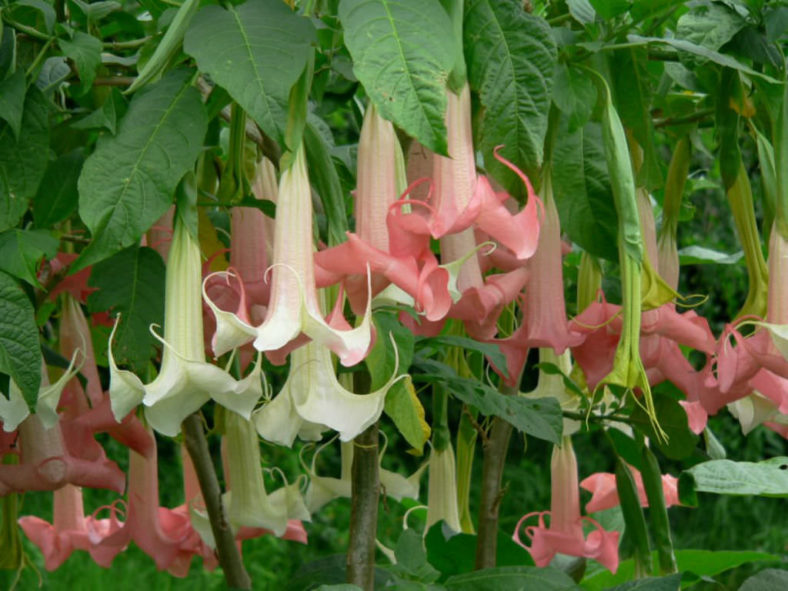Brugmansia, commonly known as Angel's Trumpet, are large shrubs or small trees with semi-woody, often many-branched trunks. They produce large, trumpet-shaped flowers in shades of white, yellow, pink, orange, green, or red. Under the right conditions, they will bloom all year. Angel's Trumpets thrive in USDA hardiness zones 10b through 11, but you can also grow them as indoor container plants. These plants produce the most blooms when they receive the proper care, regular fertilizing, and occasional pruning.
Growing Conditions and General Care
Plant Angel's Trumpets in well-draining soil. They like plenty of water but are prone to root rot in wet locations. Use pots with drainage holes for indoor plants.
Water Angel's Trumpet thoroughly so that the soil stays moist. The leaves will wilt when the plant is thirsty. Although the Angel's Trumpet tolerates drought and responds well when watered, lack of water affects future flower production. Apply a 2-inch (50-cm) layer of organic mulch around the plant's base in dry conditions. The mulch will help the soil retain moisture.

Fertilize Angel's Trumpet with a well-balanced, water-soluble fertilizer. Do not use slow-release fertilizers. Feed outdoor plants every two weeks during the growing season with a 17-17-17 fertilizer. Feed indoor plants every two weeks while the plant is in bloom with a 15-5-10 fertilizer.
Trim the plants in the fall to remove lateral branches but do not cut the leader. Angel's Trumpets do not require pruning, but pruning will promote extra flowers as blooms develop on new growth.
Watch for plant pests and treat them accordingly.
Propagation
There are three methods of Angel's Trumpet propagation: by seeds, cuttings, and air layering. Rooting Angel's Trumpet cuttings is the easiest way to propagate plants.
Source: sfgate.com
Links
- Back to genus Brugmansia
- Plantpedia: Browse flowering plants by Scientific Name, Common Name, Genus, Family, USDA Hardiness Zone, or Origin

